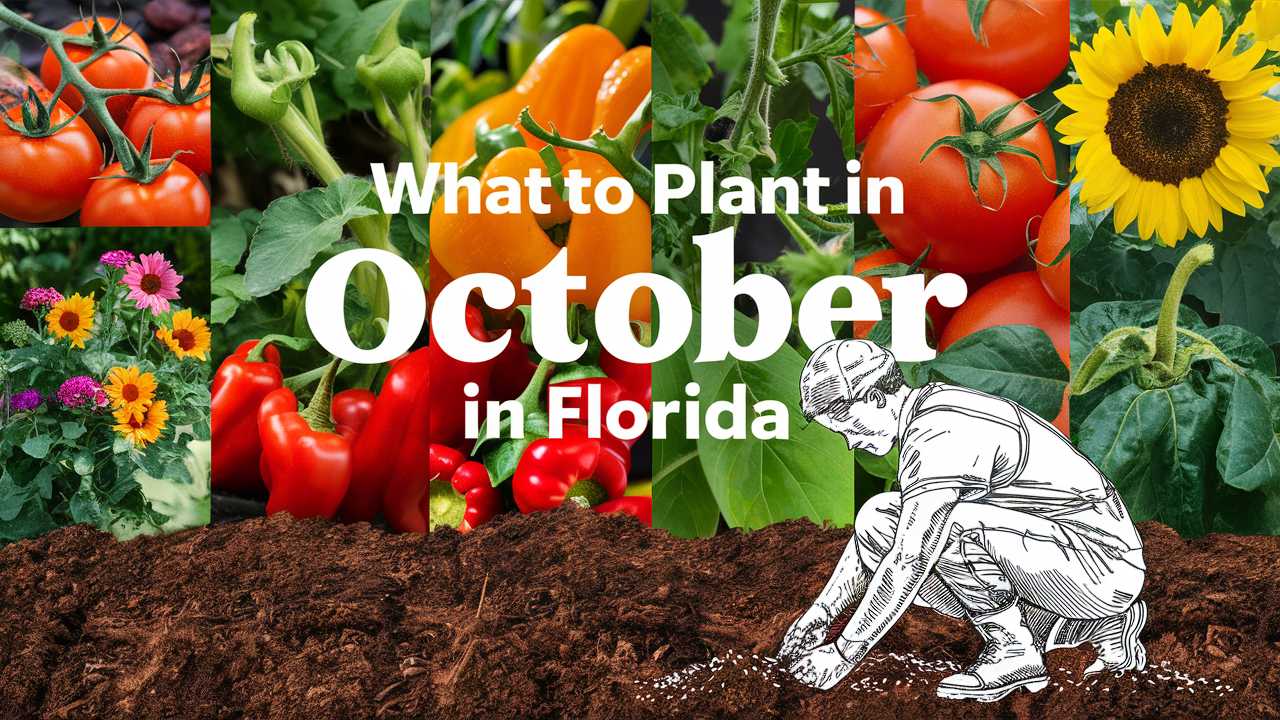For gardeners across various USDA zones in Florida, it’s an ideal period to introduce new vegetables, flowers, herbs, and landscape plants. This guide provides a detailed overview of what to plant this October, ensuring every garden enthusiast finds the perfect picks for their green spaces.
Vegetables To Plant
October allows Florida gardeners to plant several vegetables that thrive in the cooler months. This season is ideal for sowing seeds and transplanting seedlings, leading to a robust harvest in the coming months.
Tomatoes
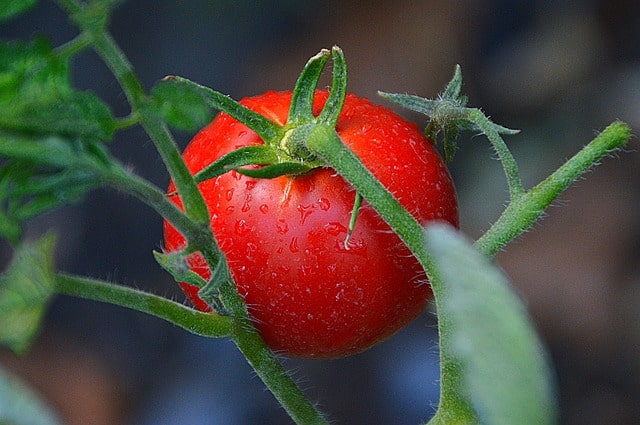
Growing Instructions and Care: Tomatoes are a beloved staple in many Florida gardens. When planting in October, opt for determinate varieties, like ‘Celebrity’ or ‘Sun Gold,’ which are well-suited for the shorter growing season.
Planting Locations: Aim for a location that receives at least six to eight hours of sunlight each day. Tomatoes enjoy warmth; in Florida, it’s best to wait until nighttime temperatures are consistently above 60°F before planting.
Soil Preparation: Enrich the planting site with compost and well-rotted manure to boost nutrient levels. A pH of 6.0-6.8 is ideal for tomatoes.
Watering Schedule: Keep the soil consistently moist but not waterlogged. Avoid wetting the foliage to minimize the risk of disease.
Harvesting: Depending on the variety, tomatoes can be harvested approximately 60 to 85 days after planting. Regularly check for pests such as aphids or spider mites and apply organic insecticidal soap if necessary.
Sweet Peppers
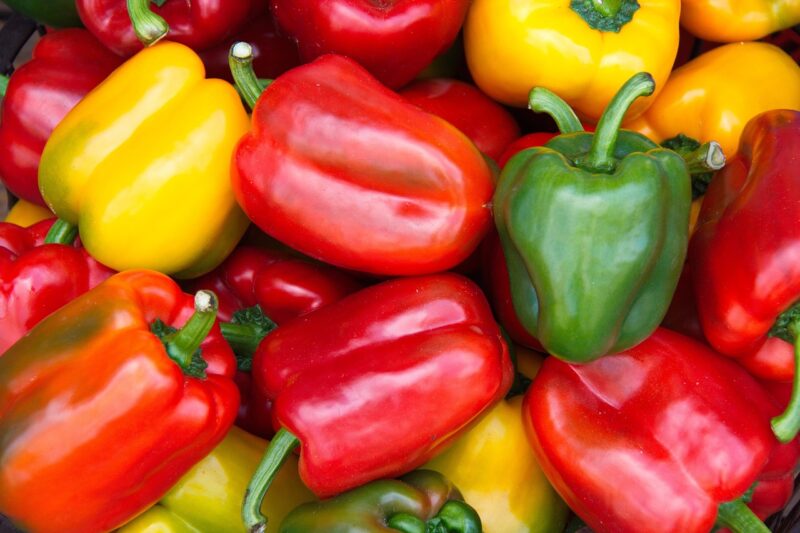
Growing Instructions and Care: Sweet peppers thrive in Florida’s warmth and can be planted in October. Varieties like ‘Bell Boy’ and ‘Cubanelle’ can be fruitful choices.
Planting Locations: Secure a sunny spot that offers at least 6-8 hours of sunlight. Peppers require warm conditions (ideally 70-80°F daytime temperatures) to establish strong roots.
Soil Preparation: Use a well-drained soil mix rich in organic matter. Peppers benefit from added calcium to prevent blossom end rot.
Watering Schedule: Maintain consistent soil moisture, especially during flowering and fruiting stages. A deep watering once a week is often sufficient.
Harvesting: Depending on the variety, sweet peppers can be ready in about 60 to 90 days. Watch out for pests such as aphids, which tend to congregate around new growth.
Carrots
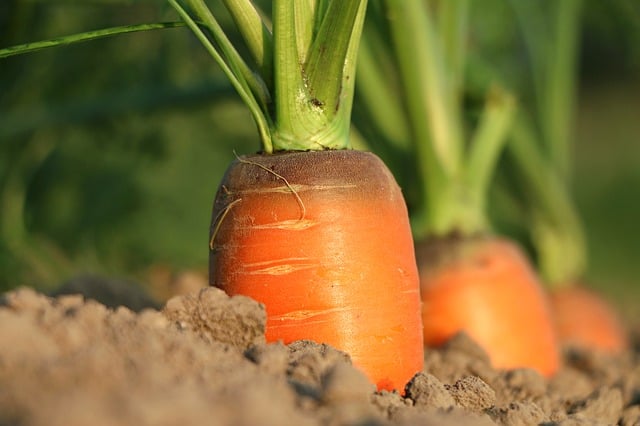
Growing Instructions and Care: Carrots planted in October develop well in the cooler air and provide delicious roots. Choices like ‘Nantes’ and ‘Imperator’ types are recommended.
Planting Locations: Carrots prefer full sun and need well-drained sandy soil that is free of rocks to enable straight and healthy roots.
Soil Preparation: Loosen the soil to at least 12 inches deep. Mixing in compost helps improve soil texture and nutrients.
Watering Schedule: Keep the soil consistently moist for even germination, and avoid over-saturating as this can lead to rot.
Harvesting: Carrots can typically be harvested 70 to 80 days after planting. Begin checking in on your carrots once they reach around 1 inch in diameter for timely harvesting.
Kale
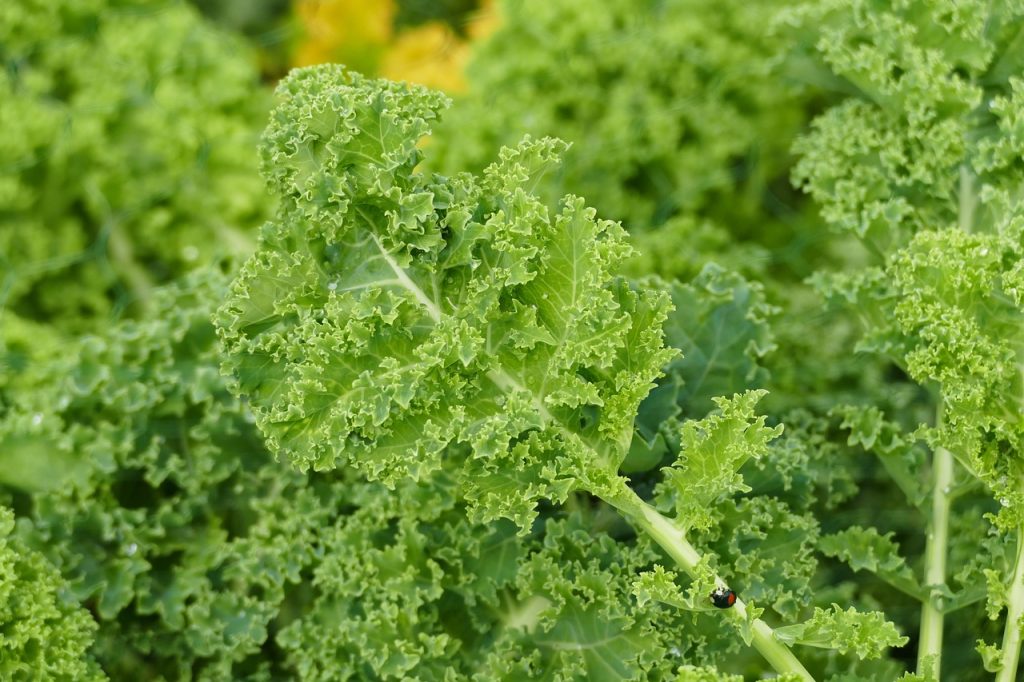
Growing Instructions and Care: Kale’s sweet flavor improves after a light frost, making October plantings particularly successful in Florida.
Planting Locations: Choose a sunny location where kale can receive 6-8 hours of sunlight per day.
Soil Preparation: Enrich soil with ample compost to encourage lush leaf growth. Kale thrives in slightly acidic soil (pH 6.0-7.0).
Watering Schedule: Consistent moisture keeps kale leaves tender. Avoid allowing the soil to dry out completely during dry spells.
Harvesting: Kale is usually ready for harvest 55 to 75 days post-planting. Leaves can be picked individually, allowing the plant to continue growing.
Radishes
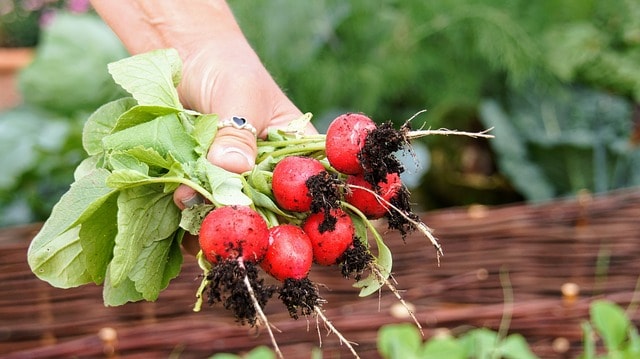
Growing Instructions and Care: Radishes are one of the fastest-growing vegetables, perfect for October planting, allowing for multiple harvests.
Planting Locations: Radishes enjoy full sun but can tolerate partial shade in warmer areas.
Soil Preparation: Well-drained, loose soil allows room for rapid root expansion. A pH level between 6.0 and 7.0 is optimal.
Watering Schedule: Keep soil slightly moist; radishes need regular watering to develop correctly.
Harvesting: Typically, radishes mature within 25 to 30 days. This fast turnaround means you can plant successive crops every couple of weeks for continual harvest.
Spinach
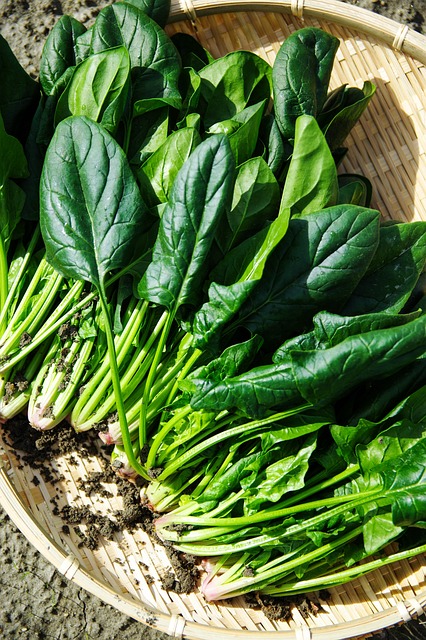
Growing Instructions and Care: Spinach thrives in cooler weather and can be planted in October in all Florida zones.
Planting Locations: Spinach grows best in full sun but can tolerate some shade.
Soil Preparation: Fertile, well-drained soil is vital, and mixing in compost can enhance nutrient levels. Maintaining a slightly acidic to neutral pH (6.0-7.0) promotes healthy growth.
Watering Schedule: Consistent moisture is essential. Mulch can help retain water while suppressing weeds.
Harvesting: Depending on the variety, spinach can mature in as little as 30 days, making it one of the quickest crops to harvest. Leafy greens can be harvested continuously by picking outer leaves.
Beets

Growing Instructions and Care: Beets can be sown in October, providing both nutritious roots and edible greens.
Planting Locations: Like radishes, beets enjoy sunny areas but can also tolerate partial shade.
Soil Preparation: Beets thrive in loose, well-drained soil free of large clumps and rocks. They prefer a slightly acidic to neutral pH.
Watering Schedule: Maintain even moisture throughout the growing period for optimal root development.
Harvesting: Beets typically mature in 50 to 70 days. Do not wait too long to harvest, as they can become woody.
Lettuces
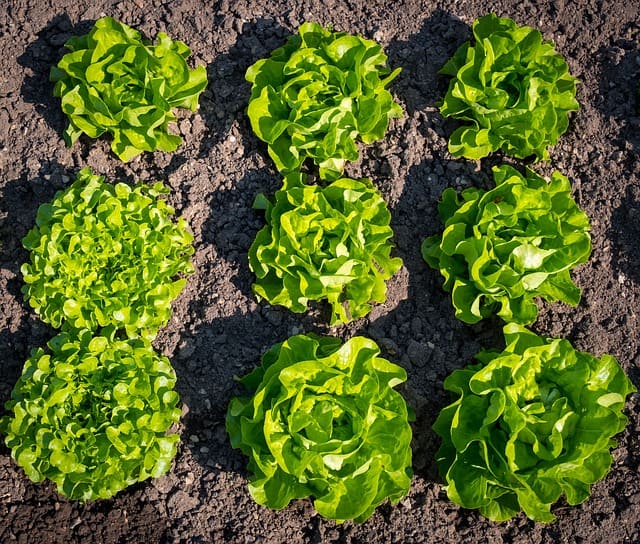
Growing Instructions and Care: October is ideal for planting various lettuce types, allowing for a continuous harvest throughout the cooler months.
Planting Locations: Lettuces prefer full sun but can tolerate light shade, especially in warmer regions.
Soil Preparation: This leafy green thrives best in fertile, well-draining soil; adding compost will improve moisture retention.
Watering Schedule: Keep the soil consistently moist but not soggy to promote healthy leaf growth.
Harvesting: Depending on the variety, lettuce can be ready in 30 to 70 days. Harvest by cutting entire heads or by picking outer leaves to encourage continued growth.
Garlic
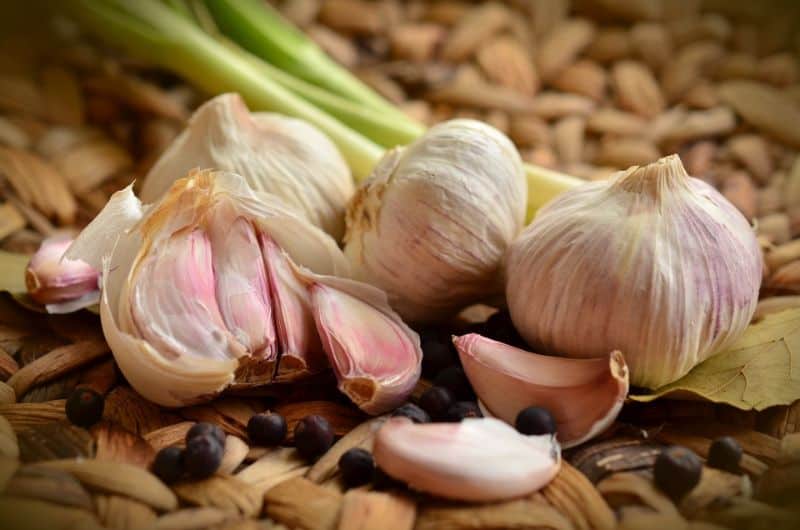
Growing Instructions and Care: Garlic is a great addition to your garden and, if planted in October, can be harvested in early summer.
Planting Locations: Choose a sunny spot with well-drained soil that has good air circulation.
Soil Preparation: Garlic thrives in rich, organic soil. Incorporate compost and well-rotted manure to enhance nutrients.
Watering Schedule: Water well when first planted, and reduce watering as the plant matures—garlic is sensitive to overwatering.
Harvesting: Garlic takes about 8 months to mature; monitoring for dried foliage signals it’s time to harvest.
Cucumbers
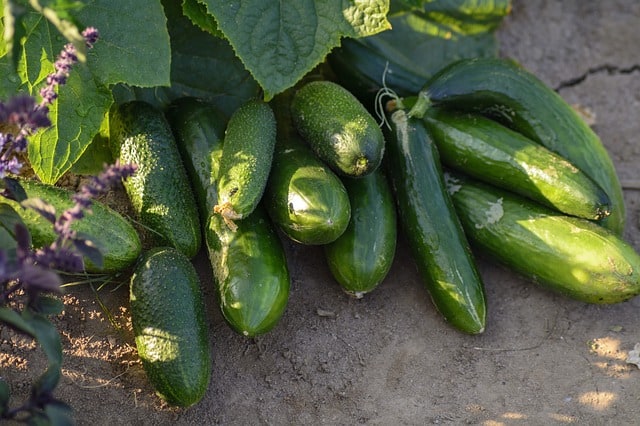
Growing Instructions and Care: Cucumbers can also be planted later in October in Florida’s warmer southern regions for a quick yield.
Planting Locations: Ensure that cucumbers receive full sunlight and space them adequately for good airflow.
Soil Preparation: Plant in rich, well-draining soil. Adding compost helps improve moisture retention.
Watering Schedule: Cucumbers need consistent moisture, especially during bloom and fruiting stages.
Harvesting: Depending on the variety, cucumbers can be ready for harvest in about 50 to 70 days. Monitor daily once they start forming fruits to catch them at the peak of ripeness.
Flowers To Plant
October, with its pleasant temperatures and declining humidity, is also a fantastic time to plant a variety of flowers in Florida. These flowers not only beautify garden spaces but also provide habitats for beneficial insects, enhancing pollination.
Pansies
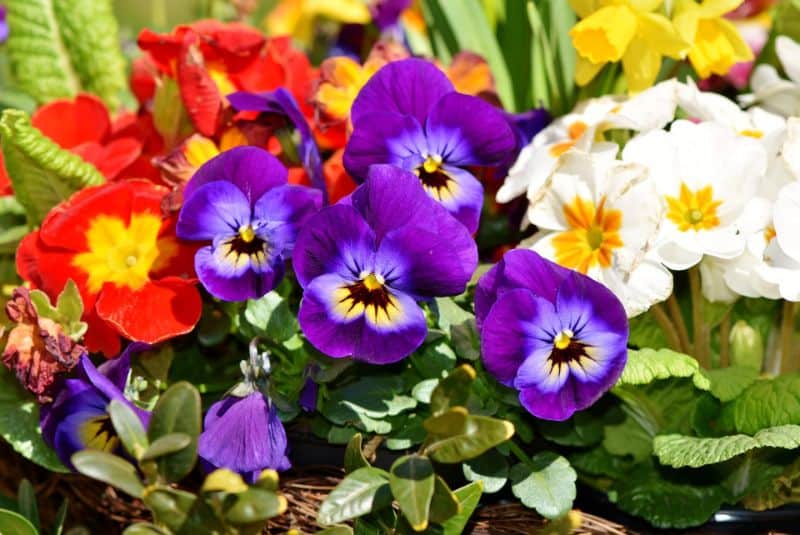
Growing Instructions and Care: Pansies are beloved for their vivid colors and heartwarming faces. Plant them in October for continuous blooms throughout the cooler months.
Planting Locations: Choose a sunny or partially shaded area. Pansies do not thrive in extreme heat, making fall planting ideal.
Soil Preparation: Ensure the soil is well-draining, nutrient-rich, and slightly acidic to neutral (pH 6.0-7.0).
Watering Schedule: Keep the soil consistently moist but not soggy. Mulching can help retain moisture while keeping weeds at bay.
Bloom Period: Pansies bloom from fall until spring, offering vibrant color even in cooler weather.
Marigolds
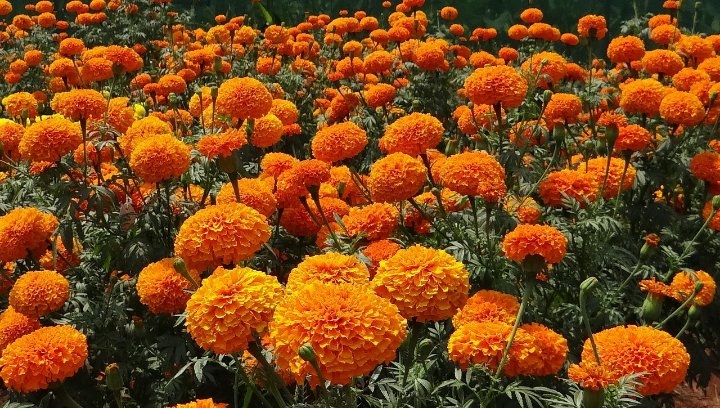
Growing Instructions and Care: Marigolds are hardy plants, easy to grow, and perfect for October plantings in Florida gardens.
Planting Locations: Marigolds thrive in full sun and can tolerate a variety of soil types but prefer well-draining conditions.
Soil Preparation: Enrichment with organic matter improves the soil. They prefer slightly acidic to neutral soil (pH 6.0-7.0).
Watering Schedule: Water well when first planted. Once established, marigolds are fairly drought-resistant but still appreciate regular watering.
Bloom Period: Depending on the variety, marigolds can bloom from early spring into fall. Their vibrant colors add cheer to gardens and landscapes.
Snapdragons
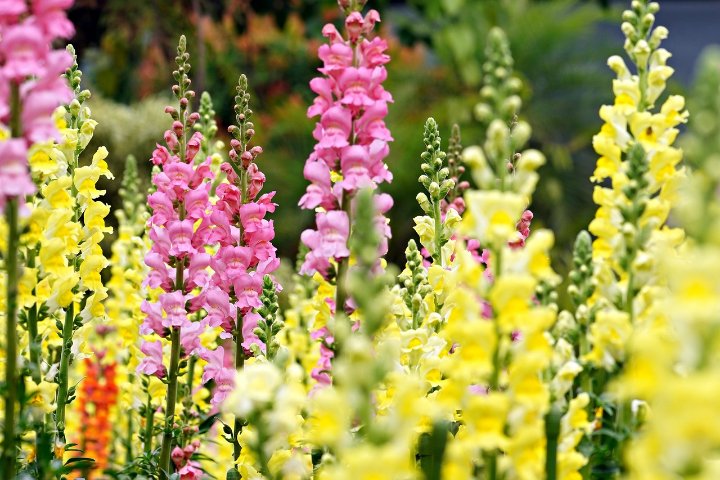
Growing Instructions and Care: Snapdragons are ideal for fall planting and bring a delightful vertical element to flower beds.
Planting Locations: Plant them in full sun or partial shade for the best blooms.
Soil Preparation: Fertile, well-drained soil is crucial, and amending the soil with compost will promote better flowering.
Watering Schedule: Even watering is essential, especially after planting. Once established, they are somewhat drought-tolerant.
Bloom Period: Snapdragons bloom from late winter until spring, offering color when many other plants are not flowering.
Violas
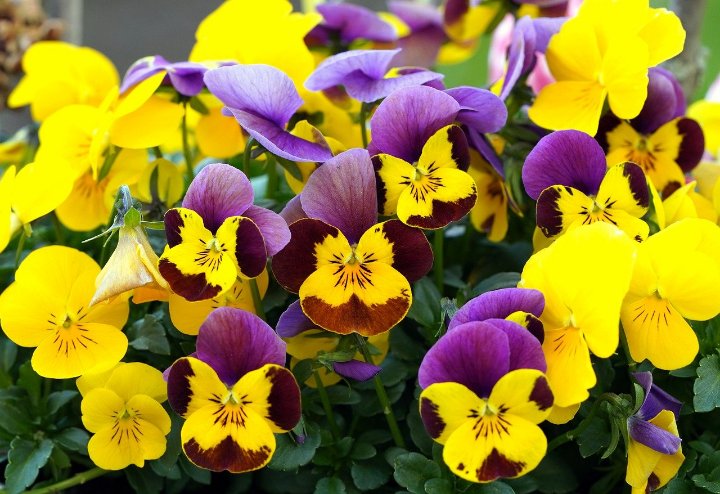
Growing Instructions and Care: Violas are closely related to pansies and offer a similar charm with a delicate presence.
Planting Locations: These flowers do well in full sun to partial shade.
Soil Preparation: They prefer slightly acidic, well-draining soil rich in organic matter.
Watering Schedule: Regular watering is necessary to keep the soil moist but not soggy.
Bloom Period: Violas bloom throughout the cool months and provide a delightful spot of color in garden spaces.
Dusty Miller
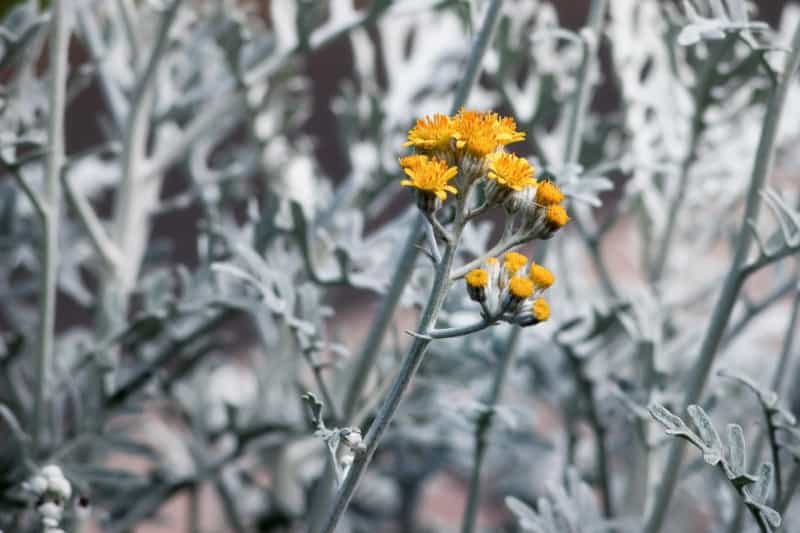
Growing Instructions and Care: Dusty Miller introduces a beautiful silvery hue and interesting texture to flower beds.
Planting Locations: It flourishes in full sun but adapts to partial shade.
Soil Preparation: Plant in well-drained soil; amending with compost can enhance nutrient content.
Watering Schedule: Allow the soil to dry out between watering for optimal growth, as overwatering can lead to root rot.
Bloom Period: Although it’s often prized for its foliage, Dusty Miller can produce small yellow flowers in the summer, attracting pollinators.
Chrysanthemums

Growing Instructions and Care: Chrysanthemums, often called “mums,” can be planted in October for stunning fall color and late bloom.
Planting Locations: Choose a sunny position. Mums need full sunlight to produce the best blossoms.
Soil Preparation: Incorporate organic compost to ensure rich, fertile soil for flowering.
Watering Schedule: Water well after planting, regularly keeping the soil evenly moist but not soggy.
Bloom Period: Mums bloom from early fall and can last through the first frost, adding seasonal cheer.
Asters
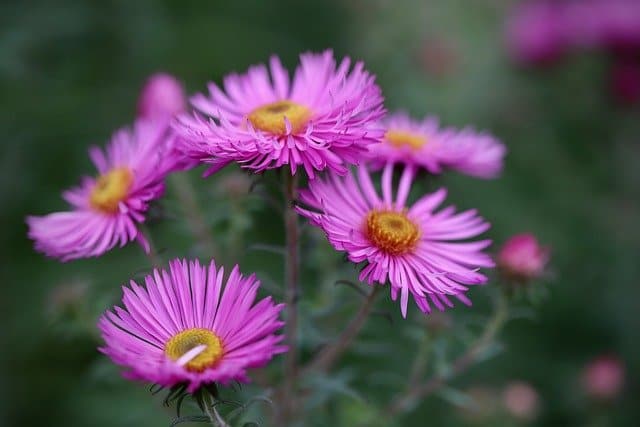
Growing Instructions and Care: Asters offer late blooms that can attract diverse pollinators, making them a cherished addition to any garden.
Planting Locations: Full sun is preferred, with well-draining soil to promote healthy growth.
Soil Preparation: Enrich soil with organic matter to boost blooming capabilities and improve soil structure.
Watering Schedule: Be sure to water regularly, especially during dry spells. Mulching can help retain moisture.
Bloom Period: Asters bloom in late summer and fall, providing color when many other plants have finished flowering.
Salvia
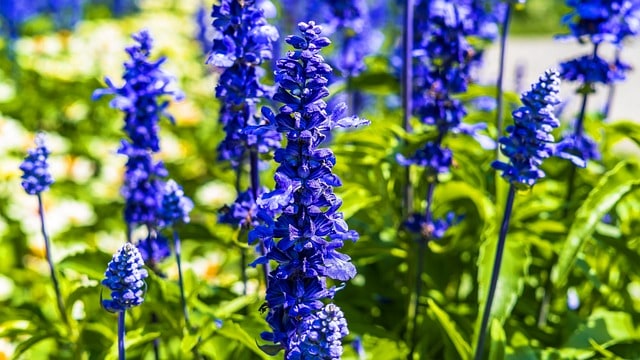
Growing Instructions and Care: Salvia, or sage, is a fragrant herb that also earns its place in ornamental gardens.
Planting Locations: Ensure salvia gets full sun; they thrive with at least six to eight hours of sunlight daily.
Soil Preparation: Well-draining, sandy soil encourages healthy growth and flowering.
Watering Schedule: Once established, salvia is drought-tolerant but should be watered regularly for the best blooming results.
Bloom Period: Salvia produces spikes of tubular flowers from spring through fall, attracting bees and hummingbirds.
Coreopsis
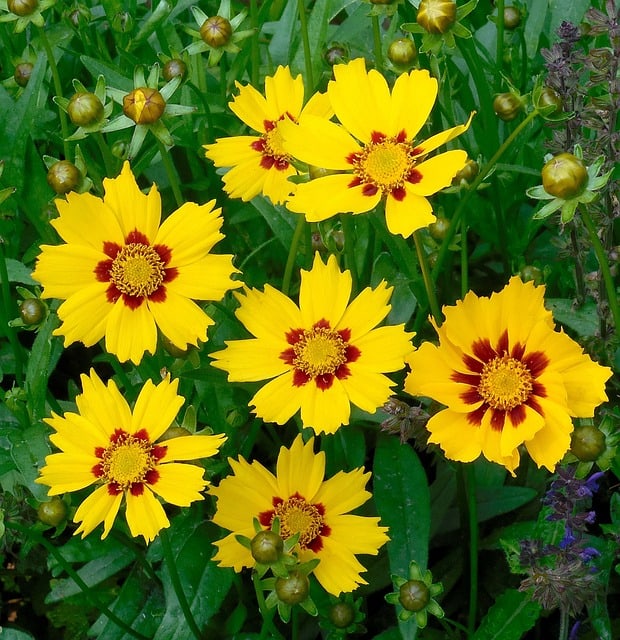
Growing Instructions and Care: Florida’s state wildflower, Coreopsis, adds a burst of sunshine to your garden with its bright yellow flowers.
Planting Locations: Coreopsis flourishes in full sun but can withstand partial shade.
Soil Preparation: It thrives in well-draining soils and is tolerant of sandy conditions commonly found in Florida.
Watering Schedule: Water regularly for establishment, but Coreopsis is drought-resistant once mature.
Bloom Period: Coreopsis blooms from spring through fall, ensuring color through multiple seasons.
Ornamental Kale
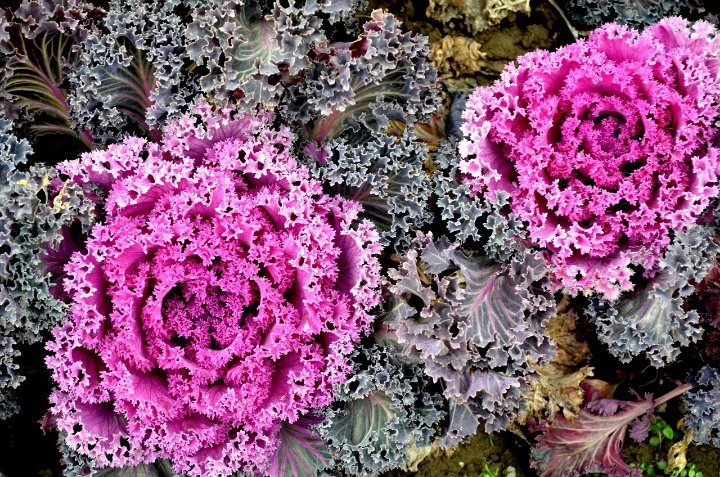
Growing Instructions and Care: Ornamental kale adds unique visual interest with its colorful foliage and is suitable for planting in October.
Planting Locations: They prefer full sun but can tolerate some shade, especially in warmer areas.
Soil Preparation: Use rich, well-draining, and slightly acidic soil for the best results.
Watering Schedule: Regular watering keeps the soil moist, especially during dry spells.
Bloom Period: Ornamental kale provides striking visual interest, especially through the cooler months, retaining its color and texture throughout the season.
Herbs To Plant
Florida’s mild fall and winter weather creates an ideal environment for planting various herbs. October is a prime time to sow these flavorful plants, enhancing both your culinary adventures and garden aesthetics.
Basil
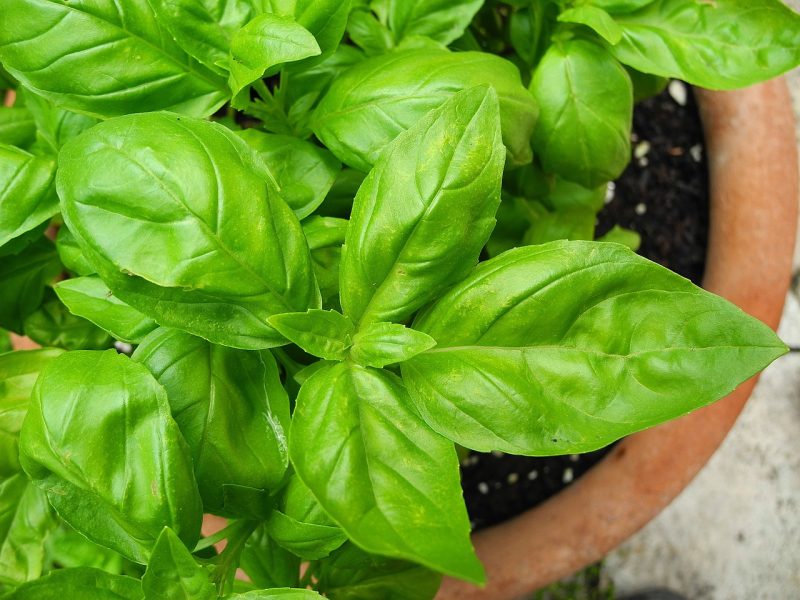
Growing Instructions and Care: Basil can be planted in October, especially in southern Florida where temperatures remain warm.
Planting Locations: Choose a sunny spot with at least 6 hours of sunlight daily. Basil thrives in warmth, ideally between 70°F and 85°F.
Soil Preparation: Use well-draining soil rich in nutrients. Incorporating compost enhances soil health.
Watering Schedule: Water basil regularly, ensuring the soil is moist but not soggy. Avoid wetting the leaves to prevent fungal diseases.
Harvesting: Regular harvesting stimulates growth. Snip leaves just above a node, ensuring the plant remains bushy.
Cilantro
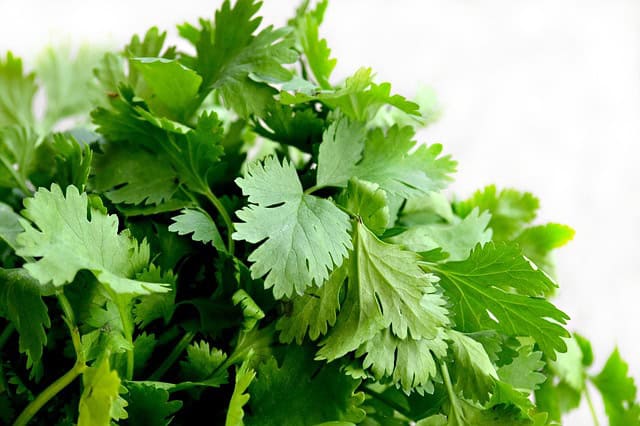
Growing Instructions and Care: Cilantro is a quick-growing herb perfect for the cooler fall months.
Planting Locations: It enjoys full sun and can tolerate partial shade, especially in warmer areas.
Soil Preparation: Well-draining soil enriched with organic matter is essential for cilantro’s growth.
Watering Schedule: Consistent watering keeps the soil moist without flooding. Keeping the soil evenly moist will help beans develop well.
Harvesting: Cilantro can be harvested 30-45 days after planting. Snip leaves at the base to encourage new growth.
Dill
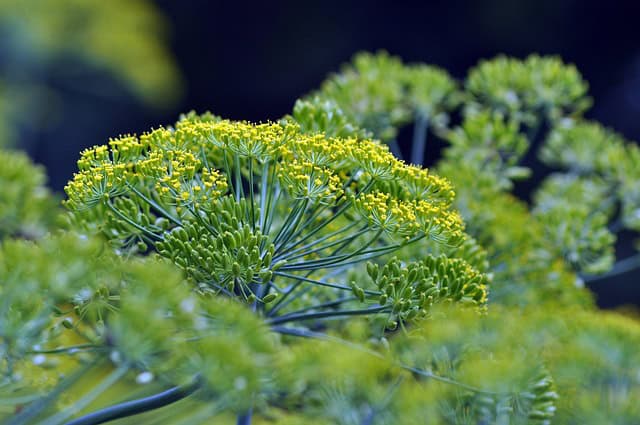
Growing Instructions and Care: Dill is an aromatic herb that grows excellently in moderately cool conditions.
Planting Locations: Dill thrives in full sunlight, requiring at least 6 hours of sun daily.
Soil Preparation: Well-draining, sandy soil with moderate organic material is ideal for dill.
Watering Schedule: Water dill consistently, especially during dry spells, but avoid overwatering.
Harvesting: Dill can be harvested 40-60 days after planting. Leave some plants to go to seed for an additional harvest.
Chives
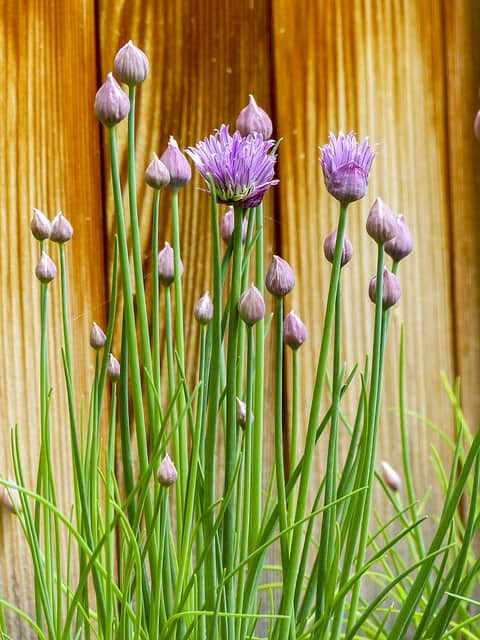
Growing Instructions and Care: Chives are hardy and easy to grow in Florida’s cooler months.
Planting Locations: Chives prefer full sun but can tolerate partial shade.
Soil Preparation: Plant in well-drained, fertile soil with a neutral pH.
Watering Schedule: Regular watering is important, but chives prefer slightly dryer conditions to avoid rot.
Harvesting: Cut the leaves back to about 1-2 inches above the ground to allow for continued growth.
Oregano
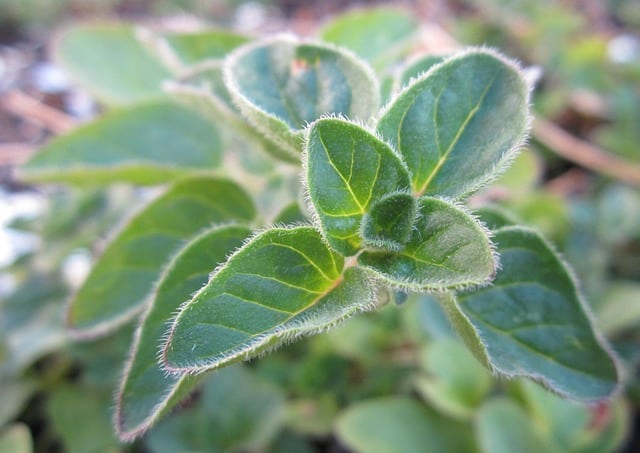
Growing Instructions and Care: Oregano, a staple in Mediterranean cuisine, does well in Florida’s mild weather.
Planting Locations: Full sun is preferred, but oregano can handle light shade.
Soil Preparation: Well-draining soil is vital; oregano prefers soils that are not too rich.
Watering Schedule: Once established, oregano is drought resistant, but regular watering in the early days is essential.
Harvesting: Begin harvesting leaves once the plant is well-established—about 6-8 weeks after planting.
Thyme
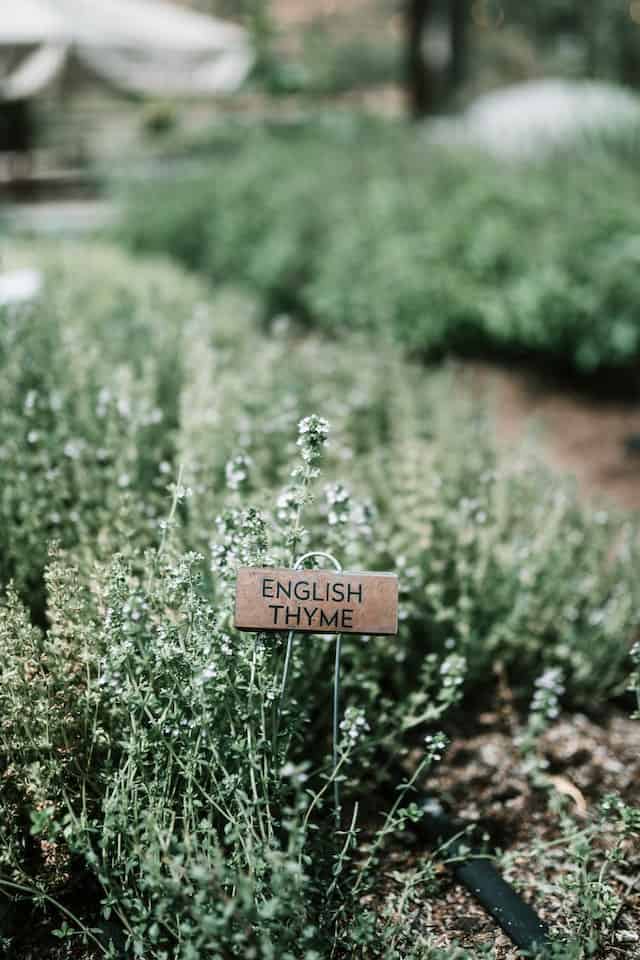
Growing Instructions and Care: Thyme is a drought-tolerant herb that grows well with little maintenance.
Planting Locations: It does best in full sun and should be in well-draining soil.
Soil Preparation: Sandy, free-draining soil is ideal, so consider amending your soil to improve drainage.
Watering Schedule: Water thyme sparingly. Once established, it requires little moisture.
Harvesting: Harvest thyme as needed, trimming shoots back to promote bushy growth.
Parsley
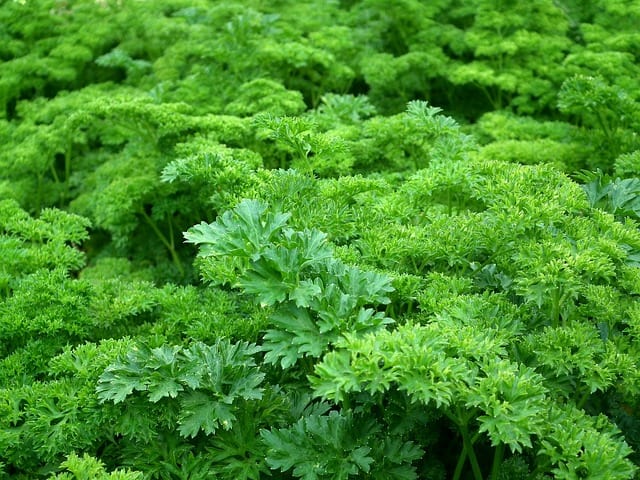
Growing Instructions and Care: Parsley is versatile and often used in cooking, making it a must-have herb in your garden.
Planting Locations: Parsley prefers partial shade and well-drained soil.
Soil Preparation: Enrich the soil with compost to provide nutrients. A pH level of 6.0-7.0 promotes growth.
Watering Schedule: Keep the soil consistently moist, particularly during the germination period.
Harvesting: Parsley can be harvested within 70-90 days. Snip the outer leaves to encourage further growth.
Mint
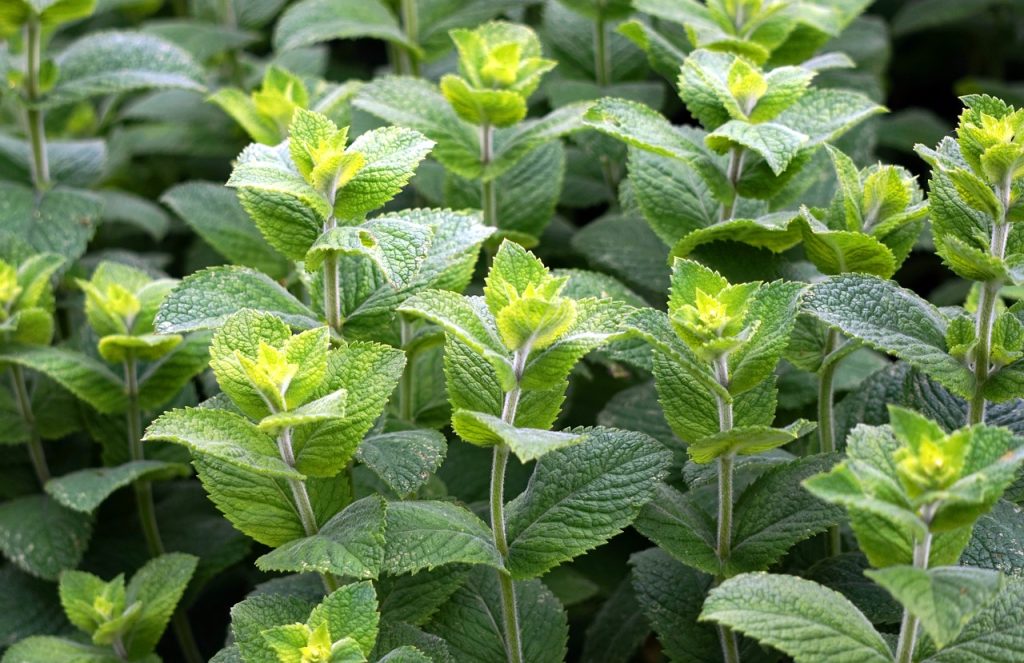
Growing Instructions and Care: Mint is a vigorous grower, making October ideal for planting this fragrance-laden herb.
Planting Locations: It does well in full sun to partial shade but tends to prefer cooler areas.
Soil Preparation: Use rich, well-draining soil. Mint can adapt to various soil types but thrives best with organic matter.
Watering Schedule: Keep the soil moist, especially during its establishment phase.
Harvesting: Harvest mint leaves at any time but be careful not to remove more than a third of the plant at once, allowing it time to recover.
Lemon Balm
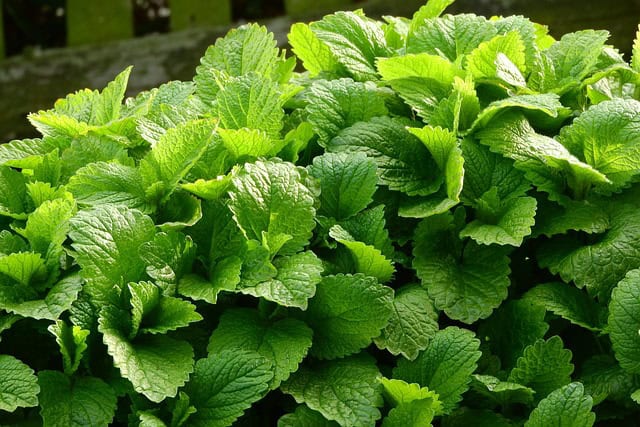
Growing Instructions and Care: Lemon balm is a hardy herb with a delightful citrus scent that thrives in October plantings.
Planting Locations: This plant flourishes in full sun but can grow in partial shade too.
Soil Preparation: Lemon balm prefers well-drained soil rich in organic material.
Watering Schedule: Keep the soil consistently moist but well-drained to avoid root rot.
Harvesting: Harvest leaves as needed, ideally in the morning when oils are most concentrated.
Rosemary
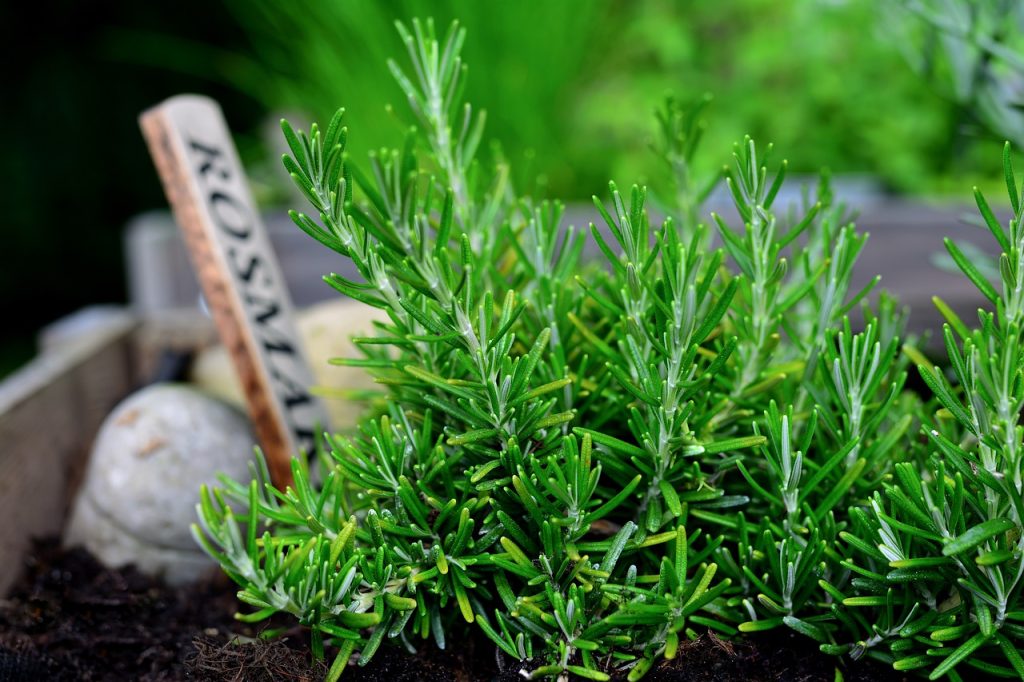
Growing Instructions and Care: Rosemary is an evergreen perennial herb ideal for Florida gardens.
Planting Locations: Ensure full sun and good air circulation.
Soil Preparation: Rosemary thrives in slightly alkaline soil. Well-draining sandy soil is ideal.
Watering Schedule: Once established, rosemary is drought-tolerant but should be watered deeply at planting.
Harvesting: Harvest rosemary by snipping stems for cooking or decorative purposes.
Landscape Plants To Plant In October
October is a splendid time to enhance landscaping with various options, from vibrant flowering shrubs to hardy, resilient trees. These plants will thrive in Florida’s moderate climate, providing lasting beauty.
Crape Myrtle
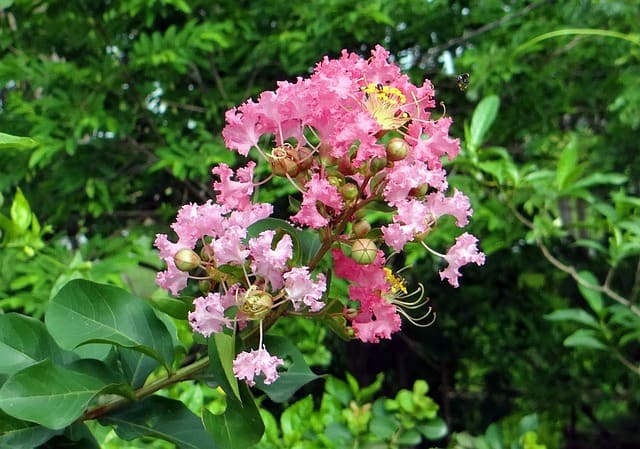
Growing Instructions and Care: Crape Myrtle trees and shrubs are famed for their vibrant summer blooms and colorful autumn foliage.
Planting Locations: Select a sunny spot, as full sunlight encourages the best blooms.
Soil Preparation: Crape Myrtle prefers well-draining soil. Adding compost can help provide the nutrients required for flowering.
Watering Schedule: Water deeply after planting, ensuring roots establish well, but reduce watering frequency as the plant matures.
Bloom Period: Crape Myrtle blooms from summer into fall, providing an array of colors.
Azaleas
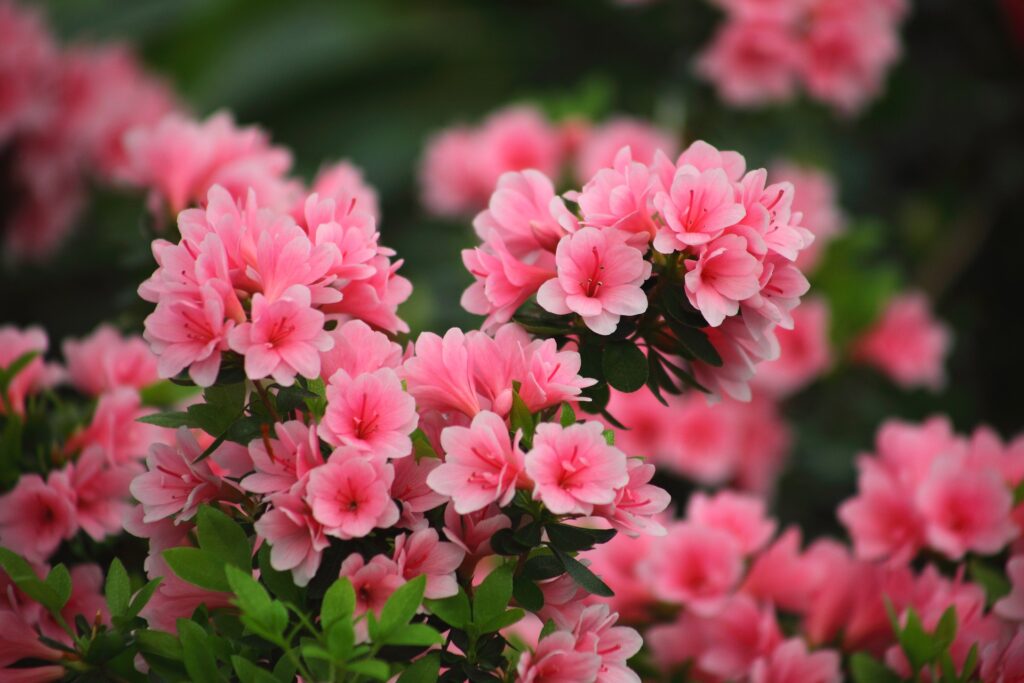
Growing Instructions and Care: Azaleas are stunning spring bloomers and thrive in the milder fall temperatures of October.
Planting Locations: Choose dappled shade spots or areas where morning sun is plentiful, protecting them from harsh afternoon heat.
Soil Preparation: Acidic, well-drained soil enriched with organic matter ensures healthy growth.
Watering Schedule: Azaleas need consistent moisture, especially while establishing themselves.
Bloom Period: Typically flowers from late winter to early spring, azaleas enrich your landscape with vivid colors.
Camellias
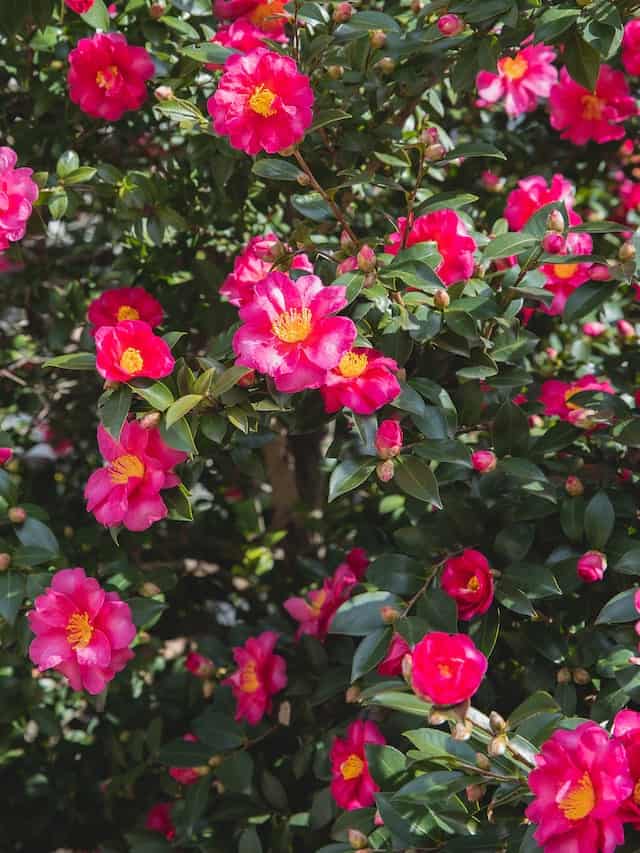
Growing Instructions and Care: These elegant shrubs bloom when many others are dormant, making them excellent for fall planting.
Planting Locations: Camellias do best in partial shade and rich, well-draining soil.
Soil Preparation: Ensure the soil is slightly acidic (pH 6.0-6.5) for optimal growth.
Watering Schedule: Water well after planting to reduce transplant shock, allowing the soil to dry slightly between waterings thereafter.
Bloom Period: Camellias bloom from late winter to early spring, offering stunning color during a traditionally barren period.
Gardenias

Growing Instructions and Care: Known for their fragrant blooms, gardenias thrive in Florida’s landscape, particularly in October’s cooler temperatures.
Planting Locations: Choose a spot that gets morning sun with afternoon shade to protect against heat.
Soil Preparation: Plant in rich, acidic soil. Incorporating organic matter improves growth.
Watering Schedule: Gardenias enjoy consistent moisture, especially during dry spells, but avoid waterlogged soil.
Bloom Period: Gardenias bloom from late spring to early summer, filling gardens with enchanting fragrance.
Oleander
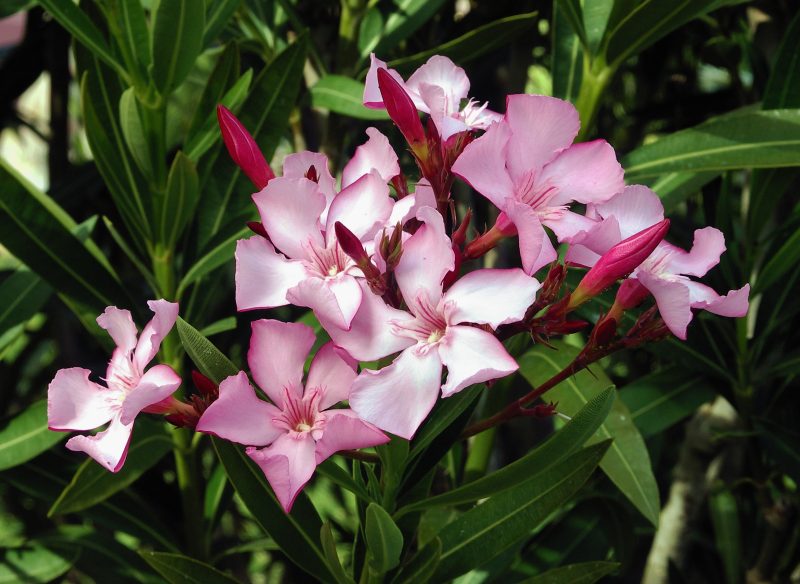
Growing Instructions and Care: Oleander is an enduring shrub that adapts well to the Florida climate.
Planting Locations: Full sun locations work best, and Oleander is tolerant of various soil types, including sandy soils.
Soil Preparation: Ensure the soil drains well; amending with organic matter can help.
Watering Schedule: Water deeply upon planting, and once established, oleanders are highly drought-tolerant.
Bloom Period: Oleander blooms in summer, displaying showy colors.
Lantana
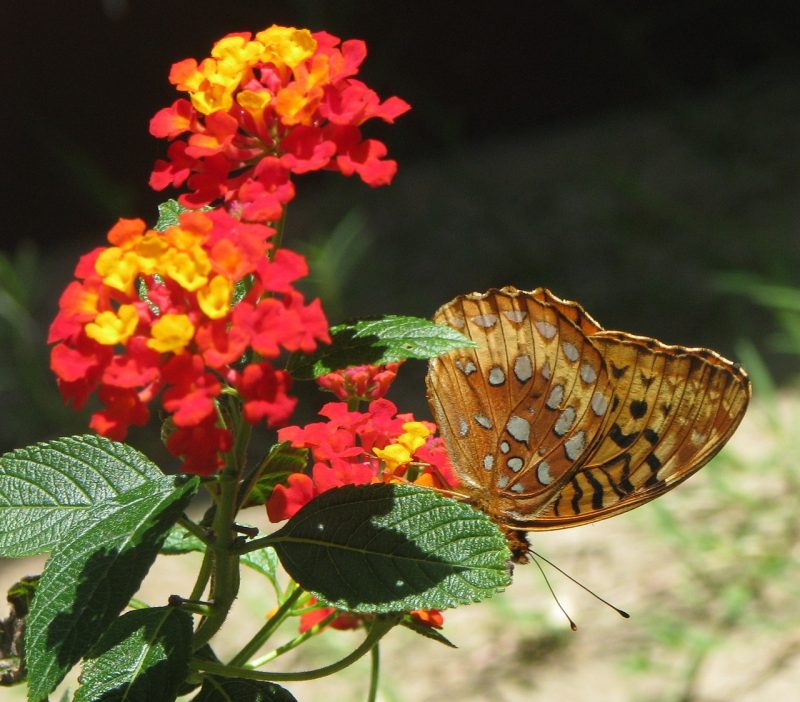
Growing Instructions and Care: This colorful perennial attracts butterflies and tolerates heat beautifully.
Planting Locations: Select a sunny area, as Lantana flourishes under full sun.
Soil Preparation: Lantana does well in poor soils if well-drained. No special enrichment is necessary.
Watering Schedule: Water them in dry spells; they are drought-resistant once established.
Bloom Period: Lantana blooms throughout the warm months, offering butterflies and bees a rich food source.
Neoregalia
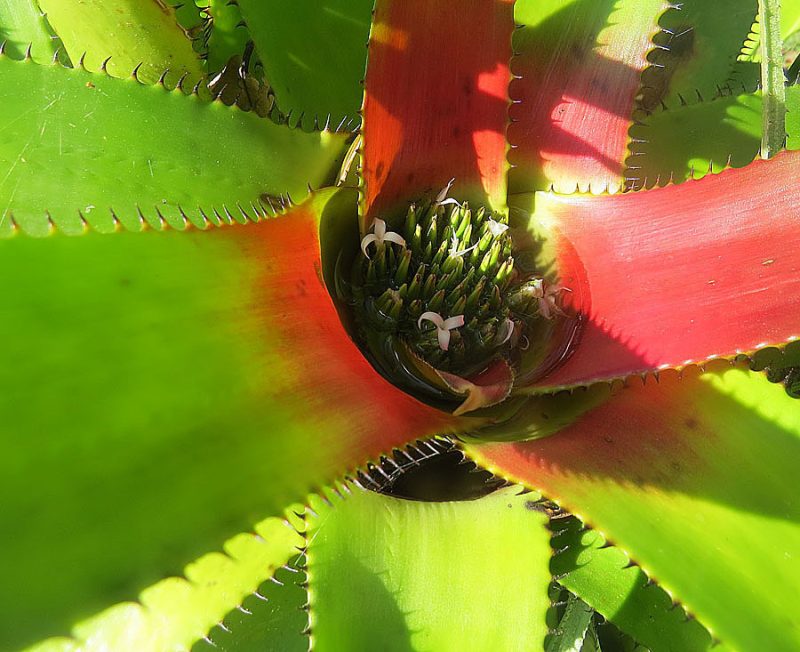
Growing Instructions and Care: Neoregalia adds an exotic touch to Florida landscapes due to its stunning foliage.
Planting Locations: They perform well in bright, filtered light. Direct sunlight can scorch the leaves.
Soil Preparation: They thrive in bromeliad mix or well-draining potting soil with high organic content.
Watering Schedule: Ensure water collects in the central rosette but avoid over-watering. They thrive in humid conditions.
Bloom Period: Typically blooms in late spring through summer, showcasing colorful bracts.
Bougainvillea
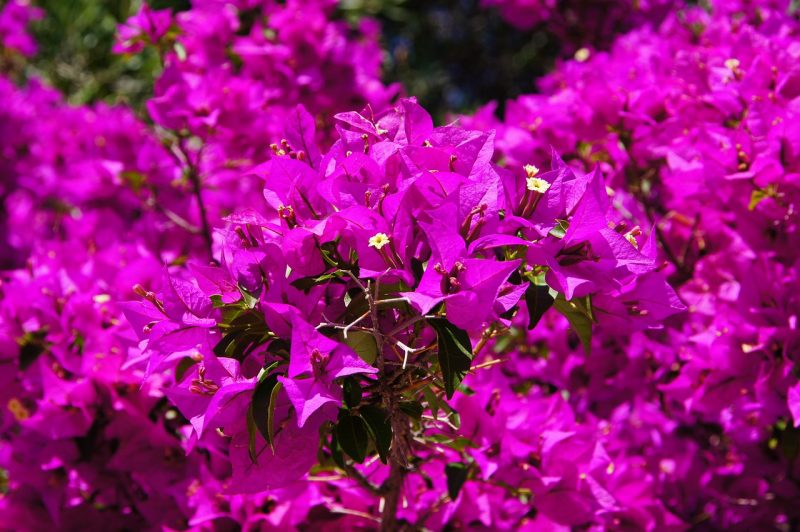
Growing Instructions and Care: Bougainvillea adds vibrant color to any landscape and thrives in Florida.
Planting Locations: Select a sunny location that provides plenty of light during the day.
Soil Preparation: Well-drained soil is essential; bougainvilleas prefer poorer soils that limit excess growth.
Watering Schedule: Deep water upon planting, but reduce frequency to allow the plant to develop drought tolerance.
Bloom Period: Produces stunning blossoms throughout the summer and fall months, enhancing garden aesthetics.
Holly
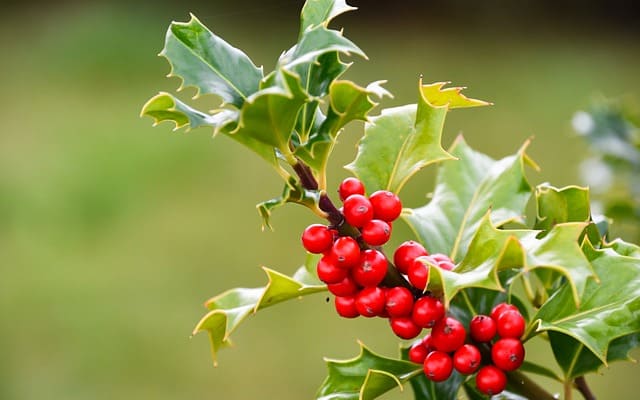
Growing Instructions and Care: Hollies are evergreen shrubs that add structure and seasonal interest to gardens.
Planting Locations: They do best in areas with full sun but can tolerate partial shade.
Soil Preparation: Use well-drained, moist soil rich in organic material for best results.
Watering Schedule: Regular watering is necessary until established, but hollies are drought-resistant once established.
Berry Production: Female hollies produce berries in fall and winter, attracting birds to your garden.
Yaupon Holly
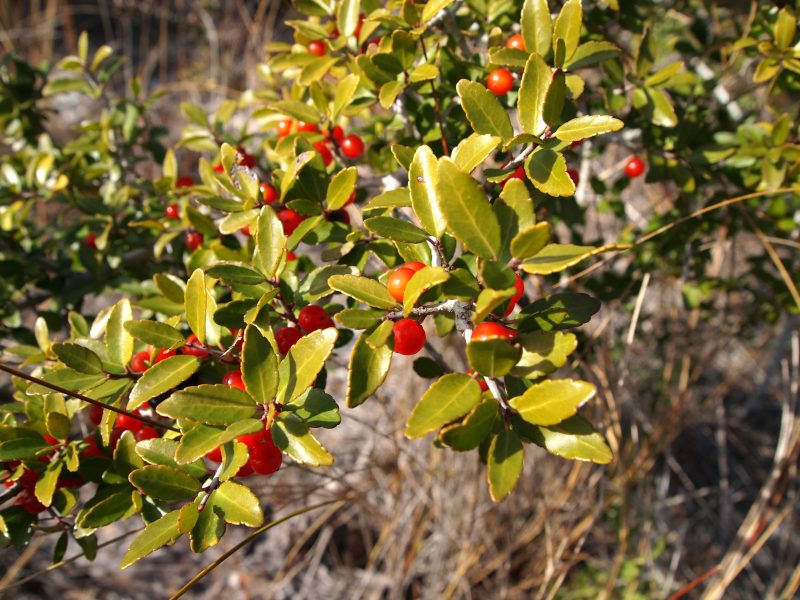
Growing Instructions and Care: Yaupon Holly is a native shrub that provides ecological benefits alongside beauty.
Planting Locations: It thrives in full sun and tolerates a variety of soil types.
Soil Preparation: Ensure good drainage for optimal growth, as Yaupon can be sensitive to waterlogging.
Watering Schedule: Yaupon Holly is generally drought-tolerant but should be given consistent moisture until established.
Berry Production: Yaupon Holly’s berries attract many bird species, adding vibrancy to the landscape during winter months.


